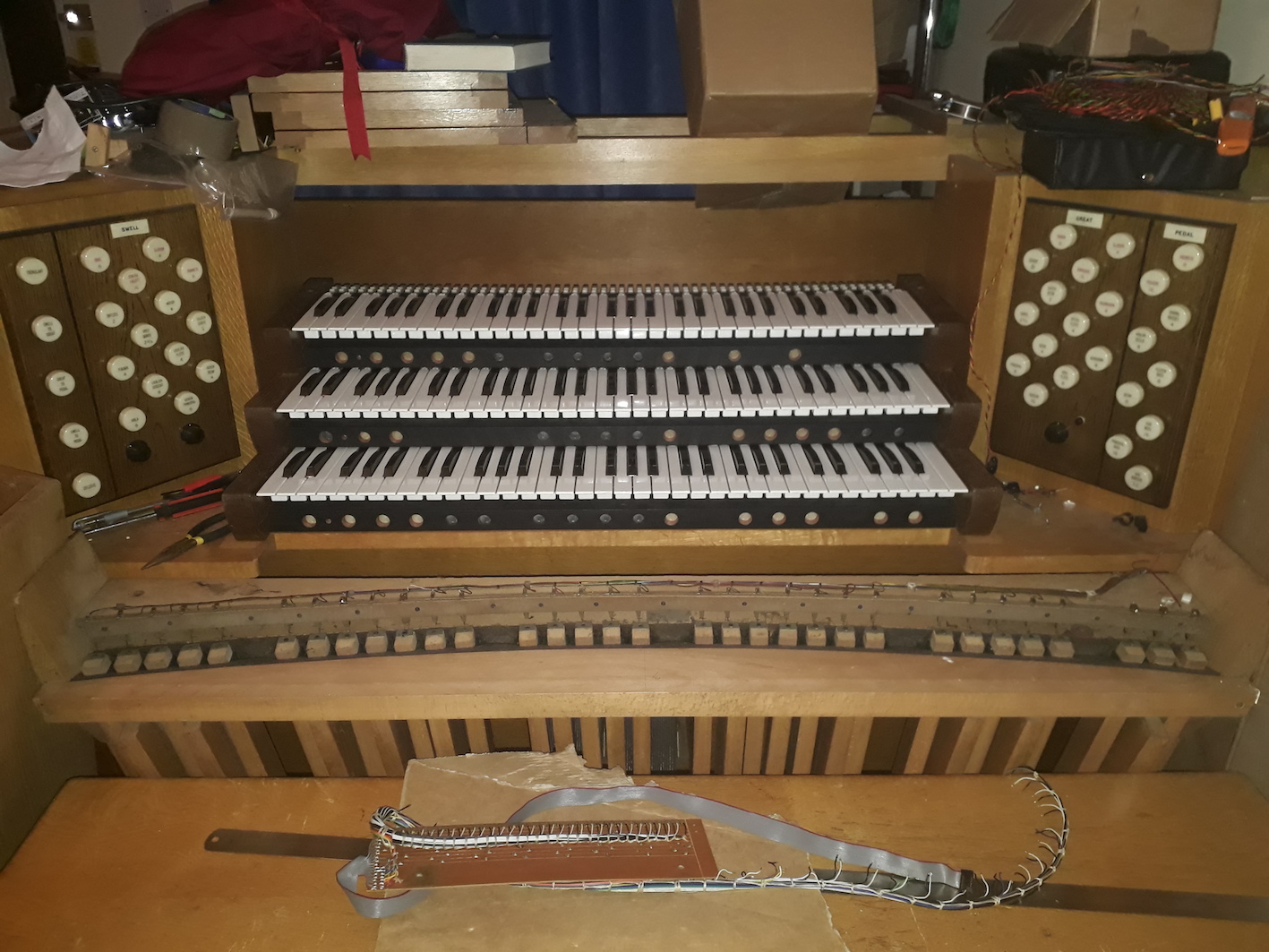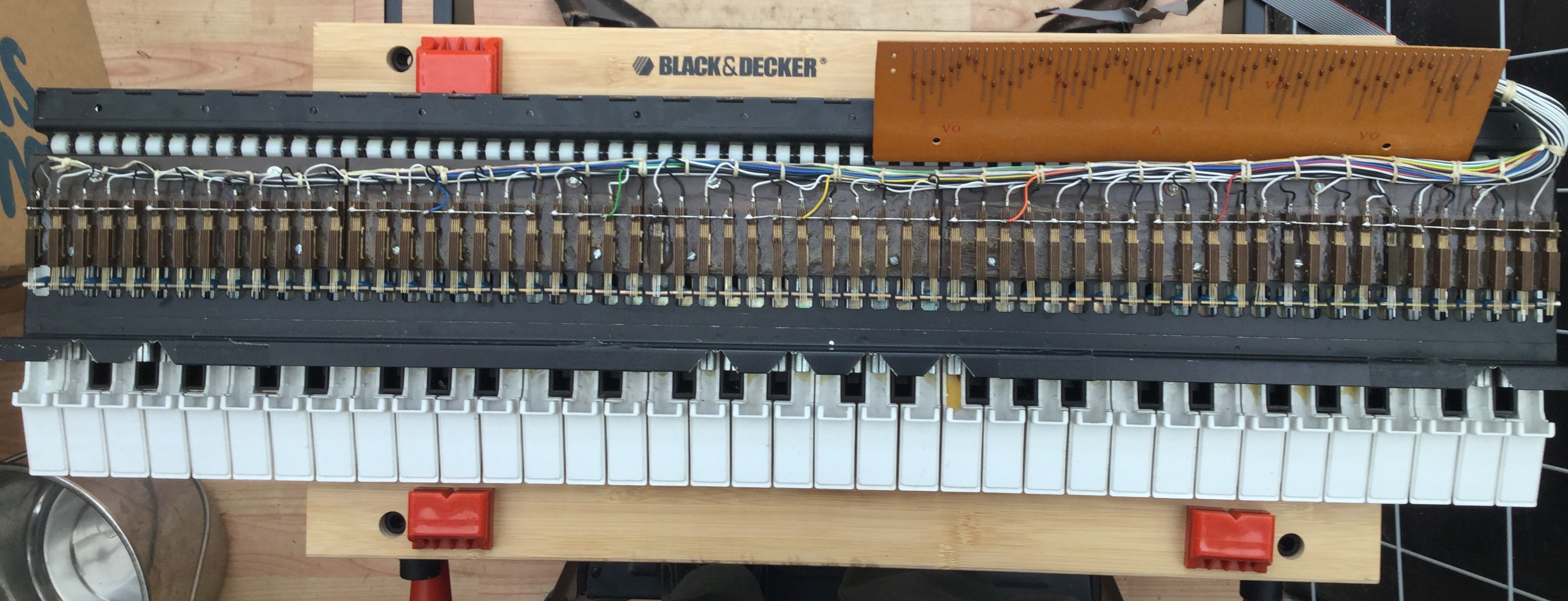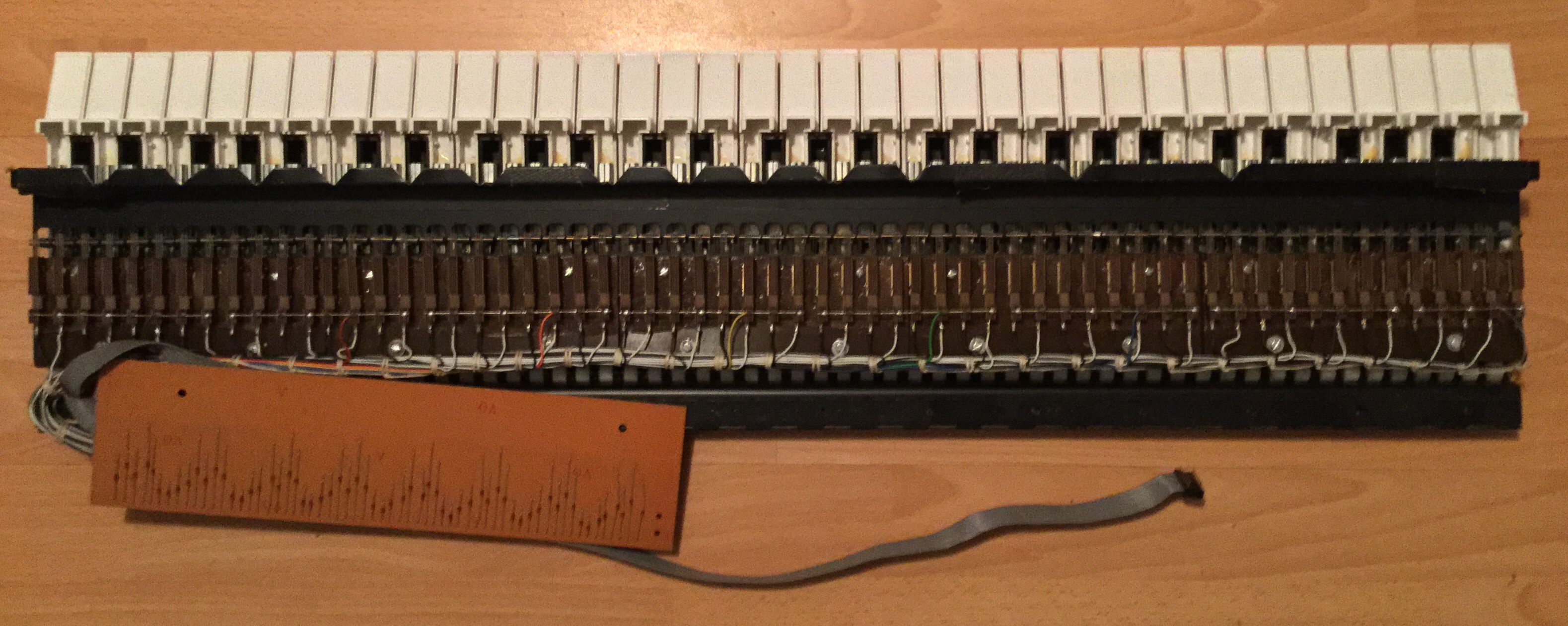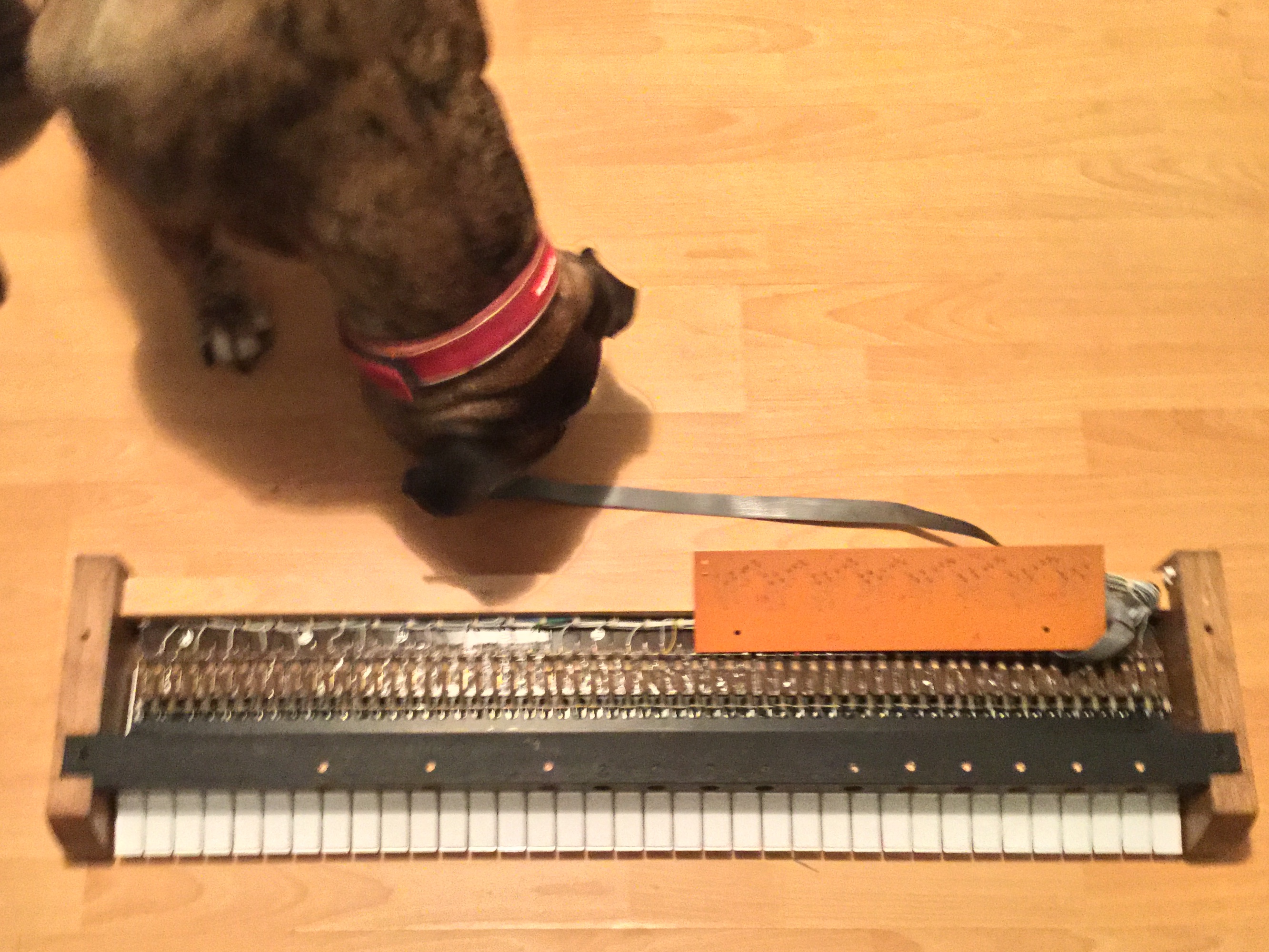I’ve just noticed that the first anniversary (1st September) of this blog slipped by unannounced. I shall celebrate with a cup of tea.
Because I had nothing better to do this evening, I decided to have a look at the pedalboard. This is, strictly speaking, out of order since the keyboards and pistons are not yet finished. However, a conversation with a midi hardware supplier (probably the one I’m going to buy stuff from) prompted me to get out the screwdriver for a naughty peek.
Whereas most Wyvern hardware I have seen – especially the older stuff – has all the hallmarks of being made by craftsmen, the workmanship of the pedalboard is, I suppose, best described as ‘functional’. This, coupled with the fact that the pedalboard is ever-so-slightly too small to fit neatly under the console, suggests to me that t is not part of the original console build. There’s nothing wrong with it, it’s just not pretty.
So, the pedals make noises via the medium of 3-wire contact assemblies, which are very badly tarnished, and a couple of them are obviously damaged. I could spend a lot of time laboriously cleaning each wire, and then replace the damaged ones, having tried not to damage any more in the cleaning process. Or I could spend about £50 and put in reed switches in about the same length of time.
With such weighty decisions is my mind burdened this evening. The dogs are no help at all. I tried to engage in a spirited discussion of the relative merits of each system, but Betty started cleaning herself and Mia stared vacantly at me while drooling on the sofa. Drools a lot, does our Mia.







